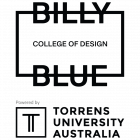
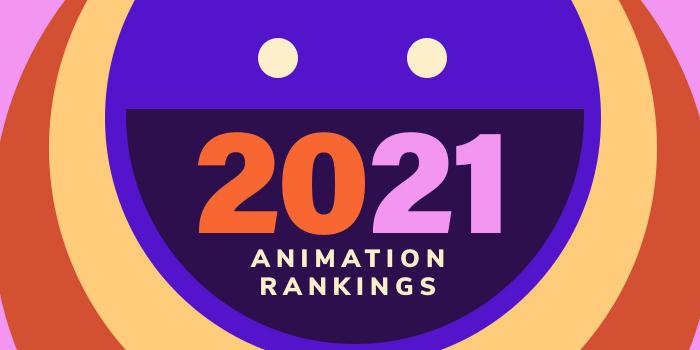
What are the top animation schools in Australia and New Zealand?
| Ranking | School | City |
|---|---|---|
| 1 | RMIT University | Melbourne |
| 2 | Media Design School | Auckland |
| 3 | Griffith University | Queensland |
| 4 | University of Technology Sydney | Sydney |
| 5 | University of Melbourne | Melbourne |
| 6 | Swinburne University of Technology | Melbourne |
| 7 | Queensland University of Technology | Brisbane |
| 8 | Massey University – University of New Zealand | Multiple |
| 9 | Yoobee Colleges | Auckland |
| 10 | Academy of Information Technology | Multiple |
Our 2021 rankings of the top animation colleges in Australia and New Zealand. For this ranking we only consider formal degree programs (bachelor's degree or equivalent). For an explanation of our ranking criteria, click here.
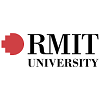
RMIT University began as the Working Men’s College in 1887. The school became RMIT University in 1992 and since then, it has merged with four educational institutions: Phillip Institute of Technology (1992), Melbourne College of Decoration and Design (1993), Melbourne College of Printing and Graphic Art (1997), and Melbourne Institute of Textiles (1999). Today, RMIT serves nearly 87,000 students, making it Australia’s largest university. In addition, this global university has an additional campus in Vietnam and over 200 exchange partners and industry connections across Asia, Europe, and North America.
RMIT offers hundreds of programs at all degree levels in 17 schools in several academic colleges. The College of Design and Social Context (DSC) consists of seven schools, including the School of Design, which offers a Bachelor of Design in Animation and Interactive Media and a Master of Animation, Games, and Interactivity.
Students in both programs will be “immersed in specialized design laboratories and studios from day one,” says the school. All courses are taught by practicing artists, designers, and industry practitioners. Course highlights for the three-year Bachelor of Design include 2D and 3D Animation, Animation and Interactive Media Design Effects, Animation and Interactive Media Design for Movement, Sound Design for Animation, and Visual Effects.
Course highlights for the two-year Master’s Program include Advanced Play Design, Animated Narratives, Animation, Games and Interactivity Studio (three studios), Character, Place and Simulation, Professional Preproduction, Research Methods for Design and Digital Media, and The Illusion of Life. Students will also complete a Professional Research Project and an Animation, Games, and Interactivity Industry Portfolio.
Students in this graduate program will work alongside the Australian Centre for The Moving Image (ACMI X) and they will exhibit their work at the Melbourne International Animation Festival, and have opportunities to collaborate with academic staff, industry practitioners, and RMIT research centers.
Students in both programs have access to brand new animation and game design studios, individual studio spaces, and industry partnerships with ANZ, the National Gallery of Victoria (NGV), the Australian Centre for The Moving Image (ACMI), and the Australia Post. Students also have the opportunity to exhibit in festivals and conferences such as Annecy, LIAF, MIAF, MILIA, and Siggraph.
RMIT Animation alumni work in 2D/3D Animation, App and Web Development, Character Design, Game Development, Interaction Design, Motion Graphics Design, Pre-Production Art, Visual Effects, VR/AE, Web Design, and more.
Graduates of the Master’s Program are also prepared for research positions ACMI X and the RMIT Centre for Games Design Research, which includes areas such as the Exertion Games Lab (XGL) and Creative interventions, Art and Rehabilitative Technology (CiART).

Media Design School (MDS) was founded in 1998. When the school opened, it offered a collection of Diplomas, with MDS becoming the first tertiary institution in the Southern Hemisphere to offer a dedicated program of study in 3D Animation using industry-standard Computer Graphics software.
Today, Media Design School is a member of Laureate International Universities—a network of more than 25 higher education institutions serving more than 875,000 students—and it offers degrees in 3D Animation & Visual Effects (VFX), Advertising, Artificial Intelligence (AI), Cloud Computing, Design, Game Art & Game Programming, Graphic Design, Interactive - UX/UI Design, Media Design and Motion Graphics.
The Bachelor of Art and Design (BAD) in 3D Animation & VFX begins with the Digital Creativity Foundation Program (one year). Year two consists of work towards the Graduate Diploma of Creative Technologies. During the next three years, students will work towards the BAD in 3D Animation & VFX. Course highlights include 3D Scripting, Advanced Creature Animation, Animation and Rigging, Design Principles and Practice, Digital Art, Mechanics, Expressions and Gestures, Modeling, Surfacing, Lighting, and Visual Effects, Rendering, Traditional Art and Design for 3D and Visual Effects, Video Production, and Workflow and Principles.
Students will complete a number of Mini-Projects throughout the program as well as several Team Production courses, and Advanced Individual Production.
Graduates of the 3D Animation & VFX Program are prepared for career paths such as 3D Modeler, Animator, Compositor, Effects Designer, Technical Director, VFX Artist, and many others. Graduates of the programs have gone on to win short film awards, land positions at major studios, and work on blockbuster films such as Avatar and The Hobbit. Just few employers of program alumni include Disney, DreamWorks, LucasFilm Singapore, Microsoft UK, Warner Bros., and Weta Digital New Zealand.

Griffith University (Griffith U) was established in 1975. The school, which takes its name from Sir Samuel Walker Griffith, a former Chief Justice of Australia, was the first in the country to introduce degrees in Modern Asian Studies and Environmental Science. Today, Griffith U serves around 50,000 students from around the world, across six campuses in South East Queensland, Australia.
Griffith U offers more than 200 degree programs in everything from Aviation and Engineering to Visual and Creative Arts. Housed within the University is Queensland College of Art (QCA), one of Australia's longest-running art and design colleges, which offers a Bachelor of Animation and an Honors Bachelor of Animation.
The Honors Program consists of 80 credit points and it is designed for exceptional visual arts students looking to further develop their practical expertise and theoretical understanding to a more advanced level. The program takes one year to complete, full-time, or two years, part-time and classes are primarily on-campus, with some mixed-mode online delivery and off-campus work placements or internships.
The Bachelor of Animation consists of 240 credit points and offers majors in Art Direction, Character Animating, and Technical Direction. All students will “learn skills in concept development, storyboarding, 2D and 3D character animation, editing, sound recording, visual effects and post-production,” says the school. They will also “develop the ability to work out the most appropriate animation format for specific projects - traditional drawn animation, 2D, 3D and motion-captured digital animation, 3D puppet or clay animation and other experimental media.”
Other program highlights include hands-on experience through studio courses and engagement with industry production, the opportunity to work alongside film and screen media production and game design students to collaborate on and complete projects, and internship opportunities.
Students will also “complete work placements or in-class simulated work activities under direction as part of Introduction to Professional Practice, Industry Research and Animation Portfolio courses.” Other course highlights include Alternative Animation techniques, Animating: Acting and Performance, Animating: Mechanics and Motion, CGI Animation, Comics and Sequential Storytelling, Digital Storytelling, Interactive Storytelling, Outback Filmmaking Bootcamp, Reading the Moving Image, Scriptwriting, and Stop Motion Animation Fabrication.
The Bachelor of Animation Program takes three years to complete, full-time. Graduates of the program are prepared to pursue positions in 2D and 3D Character Animation and Visual Effects for Computer Games, Film, Interactive Media Companies, and Television Studios.
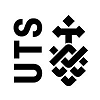
University of Technology Sydney (UTS) began as the Sydney Mechanics School of the Arts in 1833. This was the colony’s first school of art. Sydney’s largest technology university, UTS serves more than 46,000 students enrolled in hundreds of programs through nine Faculties and 25 schools.
The Faculty of Design, Architecture and Building offers a Bachelor of Design in Animation and a Master of Animation and Visualization. Both programs consist of animation studio courses, elective options, hands-on experience, and internship opportunities. Course highlights for the Bachelor of Design include Animation Studio: Advanced Animation Practice, Animation Studio: Animation Project Pre-production, and Animation Studio: Animation Project/Production.
The UTS Master of Animation and Visualization was developed in partnership with Animal Logic, and it is offered through the UTS Animal Logic Academy. Program highlights include mentoring by industry professionals, learning modeled on real-world production work structures in a custom-built digital studio, and collaborative work practices. Course highlights for the program include The Challenge Studio, The Collaboration Studio, and the Connected Studio.
Career options for graduates of the Animation Programs at UTS include Animator, Animation Scriptwriter, Augmented and Virtual Reality (AR/VR), Character Designer, Compositor, Concept Artist, Director, Editor, Effects (FX) Animator, Matchmover/3D Tracker, Modeler, Previsualization Artist (Previs) Producer, Rigger, Scriptwriter, Storyboard Artist, Rigger, Roto Designer, Stop Frame Model Animator (Claymation), and VFX Artist.
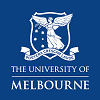
University of Melbourne was established in 1853. When it opened, the school had four professors and just 16 students. Today, University of Melbourne has more than 8,000 academic and professional staff serving a student body of more than 48,000, including more than 13,000 international students from over 130 countries around the world. The school offers hundreds of programs across eight campuses and in dozens of faculties, departments, and schools.
University of Melbourne’s Faculty of Fine Arts and Music houses the Victorian College of the Arts (VCA), which offers a BFA in Animation. The program “provides an immersive and experiential education, focusing on the origination and development of animated projects for a wide range of screen contexts and audiences,” says the school. Students will study and create in a studio-based environment that allows them to collaborate with students within the Film and Television programs and programs across Design, Music, Performing Arts, Production, and Visual Art.
Course highlights for the program include Animation Lab, Animation Studio, Collaborative Production, and Writing Animation. During every year of the BFA Program, students will produce an animated short film, written, directed, animated, sound designed and edited entirely by the student.
Graduates have established careers as Animation Artists for the Art and Entertainment Industries including Community Arts, Film, Games, Information and Advertising, New Developments in Media and Exhibition, Motion Graphics, Screenwriting, Storyboard Art, and Television.

Established in 1908 as Eastern Suburbs Technical College Swinburne University of Technology (Swinburne) serves more than 42,000 degree-seeking students and nearly 16,400 vocational students enrolled in hundreds of Arts, Business, Design, Engineering, Health, Law, Science, and Technology programs across campuses in the Melbourne suburbs of Croydon, Hawthorn (main campus), and Wantirna as well as Sarawak, Malaysia. All campuses feature state-of-the-art facilities and unique learning environments.
Swinburne programs are offered through in several faculties, eight schools, and four departments. The School of Arts, Social Sciences and Humanities houses the Department of Film and Animation, which offers six programs for aspiring animators. Options include a Bachelor of Animation (BA-ANI), Bachelor of Games and Interactivity/Bachelor of Animation (BB-GAMIANI), Diploma of Screen and Media – Animation, Advanced Diploma of Screen and Media – Animation, Certificate IV in Screen and Media, and an Advanced Diploma of Creative Product Development.
The most popular options for students seeking a longer program include the BA-ANI and the BB-GAMIANI. The BA-ANI provides “practical, hands-on experience in 2D, 3D and stop-motion animation for film and television, visual effects and games,” says the school. Specializations include Character Animation, Direction, Product Design, Production Management, or Story Development. Other program highlights include access to state-of-the-art workstations, a purpose-built animation studio, interactive pen displays, high-end cameras, and render farms for processing 3D computer animation.
Students in the program will have opportunities to build their CV “with real industry experience” through Work Integrated Learning programs, which are a guaranteed part of all Bachelor degree programs. The programs include placements, internships and, industry-linked projects.
The program ends with the BA-ANI Major Project, which consists of the development of an animated film. Students will work as a team in professional roles to pitch, develop and produce the project for exhibition within public film or animation festivals, public galleries or public broadcast.
Graduates of the Swinburne Bachelor of Animation Program go on to establish successful careers the Animation, Film, and Television industries as well as Digital Media, Education, Games, Web Broadcasting, and more.
In the BB-GAMIANI Program, students will gain a “broad understanding of animation through the practice of animation techniques.” Students will learn about “film, television and animation history and theory, as well as the role of games in contemporary society and how games are developing as a cultural industry.” Hands-on training, projects, and career opportunities for the BB-GAMIANI mirror those of the BA-ANI Program.

Queensland University of Technology (QUT) began operating in 1989. Though young, the school now serves more than 40,000 students enrolled in over 400 programs. Options for aspiring animators include the BFA in Animation and Bachelor of Games and Interactive Environments (Animation). Both programs take three years to complete.
Students in the BFA in Animation Program will explore Animated Filmmaking, Game Development, Visual Arts, and Visual Effects. This studio-based program provides the opportunity to work on real projects in the student’s individual practice. Course highlights include Animation Aesthetics, Animation Performance, CGI Technologies, Creative Coding, Digital Worlds, Motion Design, and Visual Storytelling: Production Design.
Graduates of the QUT BFA in Animation Program go on to careers in Advertising, Animation, Computer Game Development or Programming, Film or Television Production, Motion Graphics Design, Multimedia Design, Post-Production, Visual Art, Web Design, and more. Program alumni have worked on major productions such as Avengers: Endgame, Godzilla, Guardians of the Galaxy, How to Train Your Dragon, I, Robot, and Spider-Man: Far From Home.
The Bachelor of Games and Interactive Environments (Animation) is “the most successful degree of its kind in Queensland,” says the school, “with strong connections to local games industries, as well as other industry partners in game-based technology.”
The program covers the creative and technical aspects of game development. Students will study current and emerging animation techniques, refine their skills with practice-based projects, and gain experience in the “whole process of game interaction development from identification and evaluation of ideas, creation of design concepts, critique of existing and potential products, analysis of cultural impact and industry trends, right through to the development and delivery of a final product.”
Course highlights for the program include Advanced Animation Performance, Advanced Animation Production, AI for Games, Animation and Motion Graphics, Digital Creatures, Game Engine Technology, Game Studio: Game Innovation, Interaction and Experience Design, Tangible Media, and Web Computing. A Capstone Course is also part of the program and students have the opportunity to complete a Software Technology Minor as part of the degree. Upon completion of the Minor, students are eligible for membership in the Australian Computer Society (ACS).
Graduates of the Bachelor of Games and Interactive Environments (Animation) Program are prepared to pursue titles such as Animator, Computer Game Developer or Programmer, Computer Systems Engineer Computer-Aided Designer, Digital Content Designer, Digital Content Producer, Multimedia Designer, Programmer, Software Engineer, Sound Designer, or Web Designer.

Massey University (Massey) began as an agricultural college in the city of Palmerston North. The school officially opened on March 20, 1928 as part of the University of New Zealand. In its first year, Massey had just 85 students. Today, the school serves more than 35,000 students enrolled in hundreds of programs in five colleges.
The College of Creative Arts offers a Bachelor of Creative Media Production (BCMP) with a Film, Animation, and VFX Area. Students may also study Animation in the BDes Honors Program, which covers concept design for entertainment and education within film, animation, television, gaming, and location-based experiences.
Students in the BCMP-Film, Animation, and VFX will study 3D Modeling, Character Design, Compositing, Dynamics, Particle Generation, Rigging, Storyboarding, and Texturing. Other program highlights include hands-on projects, courses taught by industry professionals from Weta Digital, BBC and more, extensive industry connections, access to industry standard production facilities, and collaborative projects with Film and Television students.
The BCMP offers an accelerated format—the program takes just three years to complete, and students will graduate with a Professional Portfolio of their work.
Program graduates go on to become 2D/3D Animators, 3D Generalists, Audio Producers, Camera Operators, Concept Artists, Directors, Editors, Effects Simulation Artists, Filmmakers, Game Art Directors, Lighting Technicians, Modelers, Motion Capture Animators, Producers, Rigging Technical Directors, Sound Designers, Sound Recording Engineers, Storyboard Artists, Visual Effects Producers, and more.
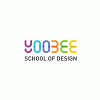
Founded in 1997 and with six campuses, Yoobee Colleges serves around 400 students at its flagship campus in Auckland. The school houses the Faculty of Animation and VFX, which is New Zealand’s largest specialist Animation and VFX school.
Programs for aspiring animators include a Bachelor of Animation and an Online Diploma in Specialized Animation that covers the Fundamentals of Character Animation, Specialist Software, and Performance Animation.
The Bachelor of Animation is New Zealand’s only degree-level program specializing in 2D and 3D Character Animation. Students in the program will complete 360 credits of study over three years. The program begins with “a thorough grounding in all disciplines,” says the school, giving students “the animation chops to work as a generalist or as part of a studio team.” From there, students will “delve deeper” into their chosen field, “developing the academic, creative, and technical expertise that will set them apart.”
The degree program covers 2D and 3D Animation and Modeling, 3D Graphics and Visual Effects, Interactive Narrative, Principles of Storytelling for Film and Animation, Professional Practices, Studio-Based Life Drawing, Visual Communication Design, and more. During the third year, students will declare a Specialization in Interactive Media and Games, Story and Character, or World-Building and Visual Effects. During this final year, students will also complete a Capstone Project and an Investigative project.
The Capstone “is a practice-based investigation in which research is conducted individually, as part of a team project.” Students will “produce separate investigative outputs,” and “collaborate in a team to produce a single animation product for exhibition.” During the third year of the program, students have the option to expand their degree by applying to the Honors Program. This option will add an additional year of study to the program.
Yoobee Animation graduates go on to land positions such as Animator, Creative Director, Director, Post-Production Supervisor, Technical Director, Visual Effects Artist, Wrangler, and many others.

Founded in 1999, the Academy of Information Technology (AIT) has trained more than 5,000 students for careers in the Digital and Creative Industries. The school offers two programs for aspiring animators including a Bachelor of Interactive Media with a Focus on 2D Animation and a Diploma of Interactive Media. Programs are available at both the Melbourne and Sydney campuses, and students in the Diploma Program will take many of the same courses and have many of the same opportunities as students in the 2D Animation Program have.
The 2D Animation Program covers the Art of Animation and Storytelling, along with Design, Game Design, and Filmmaking Principles. Students in the program will also learn industry-standard software such as Adobe After Effects, Adobe Animate CC, Adobe Illustrator, Adobe Photoshop, Adobe Premiere Pro, Pro Tools, and Toon Boom Harmony.
Course highlights for the program include Advanced 2D Animation, Advanced Creative Drawing, Animation Production, Decoding Media, Digital Pathways, Digital Storytelling, Entertainment Media, Game Design, Motion Graphics, Shooting and Editing, and Screen Language. Students will also take courses that are unique to AIT, such as The Forge and the Launchpad.
In The Forge course, students will learn to combine their “knowledge, skills and attitudes to fulfil a professional brief.” The goal is to develop “speed and efficiency, challenging students to succeed, fail, experiment and learn more about themselves and others, while working under conditions that more closely resemble a workplace. Where possible, students are mentored, critiqued and assessed by industry professionals.”
In The Launchpad course, students will receive assistance with searching for employment and prepare themselves for employment. The course is also a complement to The Forge “explicitly teaching soft skills implicitly practiced in the projects.”
Graduates of the Bachelor of Interactive Media with a Focus on 2D Animation will be prepared for careers such as 3D Artist, Art Director, Creative Director, Creative Technologist, Game Designer or Developer, Illustrator/Cartoonist, Interactive Designer, Interface Designer, Level Designer, Mobile App Developer, Modeler, Motion Graphics Designer, Multimedia Director, Product Designer, UI/UX Designer, Visual Artist, and Visual Effects Artist.
